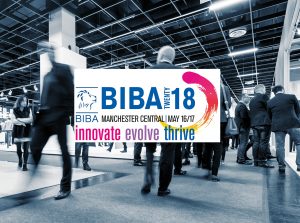People at an exhibition are looking for something, and they probably already know what it is. The key to your success is to understand whether it’s you they are looking for?
What this means is simply knowing your audience and where they are likely to be, and then being there for them to find you. There’s no point wasting your time selling to audiences who have no need for your product when there’s another audience that needs it.
So again, how do you know if you are targeting the right audience?
There are 3 Key points to consider:
1. Choose the right exhibition
This might sound like an obvious point, but is probably the hardest step of all. No matter the industry, there’s no shortage of exhibitions, but you can’t be at all of them. So how do you know which is right for you?
Start with your product or service, what exactly is it and what does it offer? If it’s brand new, you need an exhibition focused on the very latest the industry has to offer where people are looking for the next big thing. If it’s revolutionary, then often a traditional exhibition can be the place to make a statement. Turning heads, by showing how revolutionary when stood next to what people already know; and so on.
By understanding exactly what your audience is looking for, you know you are in the right place. Then you simply need to know the details – budgets, locations, promotions, likely ROI, etc. Take a look at our blog on planning your exhibition stand, as the right stand is crucial once you have the right audience.
With all this identified and considered, You’ll be left with exhibitions that truly let you show what you have to offer to its fullest potential to an engaged audience. So now it’s time you start thinking about more direct targeting of this audience.
2. What attracts your audience to your stand
This again comes down to your offering. What type of people want what you have. If you know this, then you’ll also have some idea what they will respond too.
Consider your audience or audiences in detail. What’s your key message (you may need more than one), and how do you get it out there?
Well, you need to start early. Don’t waste time waiting for the exhibition; your exhibition begins the minute you decide to go. Once this decision is made, let people know.
Promote your presence at every opportunity, passively amongst clients and colleagues and actively amongst any other channels open to you. Send invites and spread the word.
But, make sure in all of this you are giving people a reason to visit your stand. If you’ve targeted the right exhibition, and have taken the time to understand your audience, you should now know what this is. So make sure you tell them.
3. Use social media and technology to attract your target audience
Social media and technology can be the difference between success or failure for many exhibitions. If you take the time to plan and execute a detailed social media strategy the impact can be powerful.
Your activity needs to plan for before, during and after the event.
- Before: Lets you engage your audience early and gauge interest, and also generate interest. It also offers you insight into the needs of your audience during the exhibition planning process that can powerfully impact your plans for the better. Allowing you to focus your activity during the event to maximum effect.
- During: This activity should be a little more direct and a little less formal. This is about creating word of mouth during the event, and getting those that know you talking about you, to those that don’t. So you can have a little fun with it, play games, ask questions and more. It’s simply about engaging with the audience around you and opening up dialogues.
- After: This is where you put everything together, and convert the interest you generated. Following up any direct leads, and assessing all other interactions to maximise opportunities. It’s not simply a sales exercise, but more a way to consolidate your brand’s community and begin building relationships that will last.
Technology (like VR and augmented realities) and social media (Twitter, etc.) are there to make this process, simple and engaging for you and your audience. With them, you can reach further, faster. Meaning, with a little imagination, you’re no longer a slave to foot-fall. Instead, you can bring the audience to you, instead of waiting and hoping they pass. Our blog on the importance of technology puts this into context.
These 3 steps, done correctly, will ensure you are targeting the right people, at the right events, and will let you know they’ve noticed. It’s a process that offers quick validation and lets you hone your offer throughout to ensure you are delivering exactly what your audience wants.
Do you have a project or want to find out more?
Contact Matt Briggs on +44 (0) 1484 451061 or click here to drop him an email



